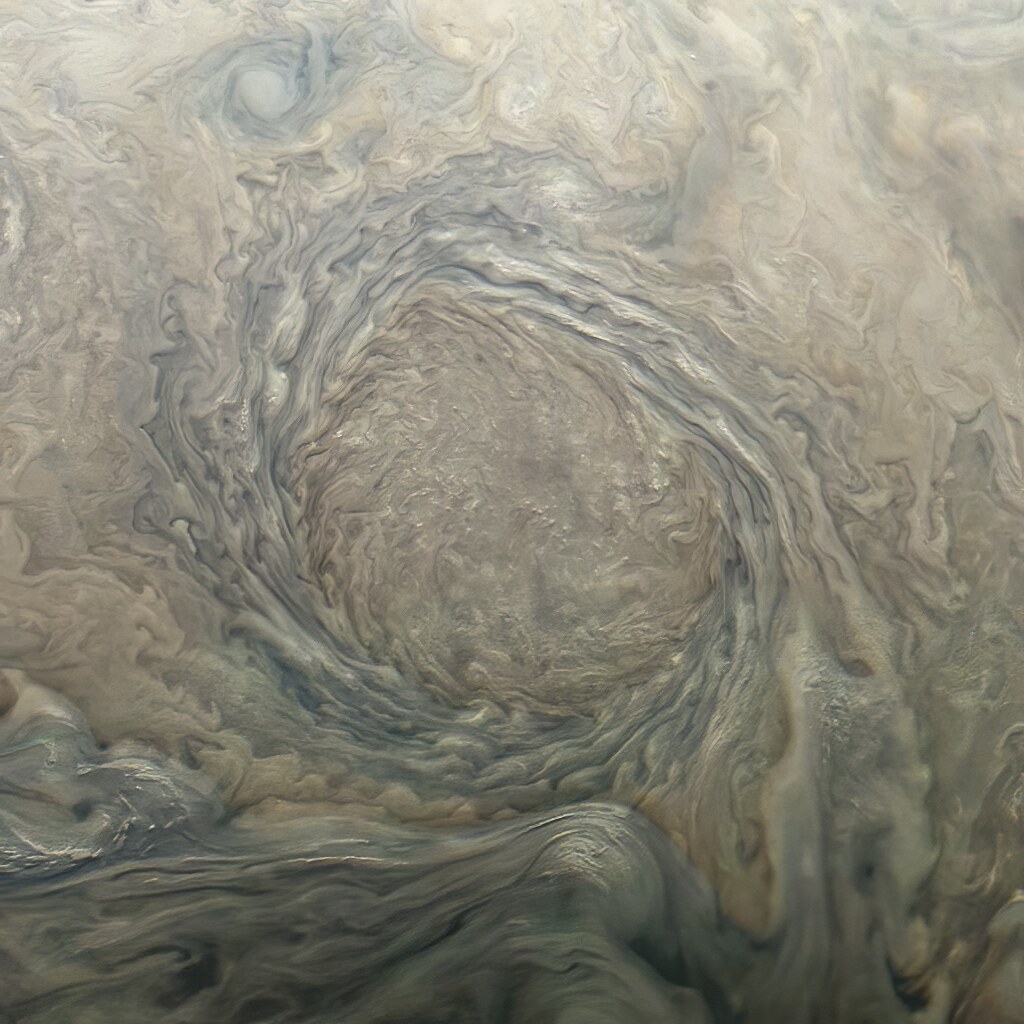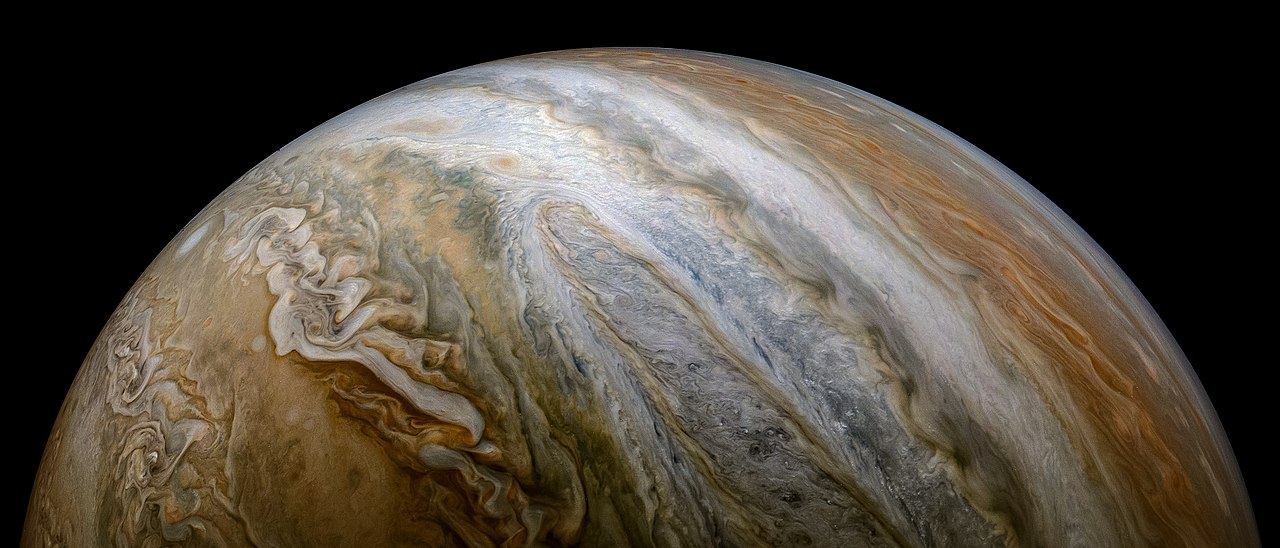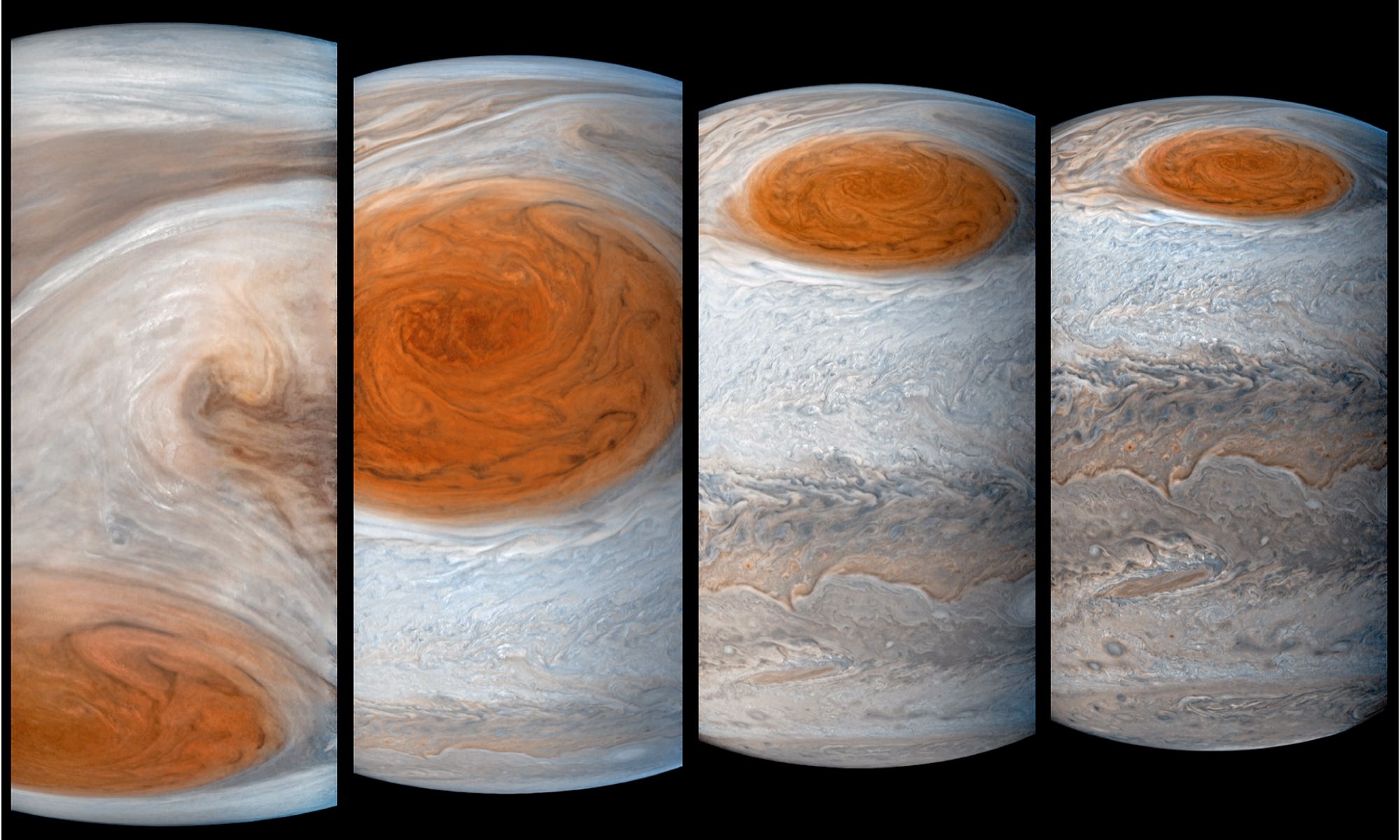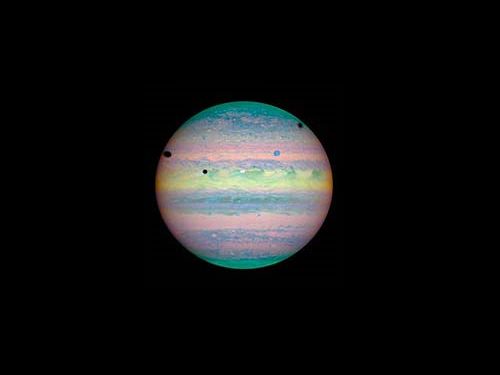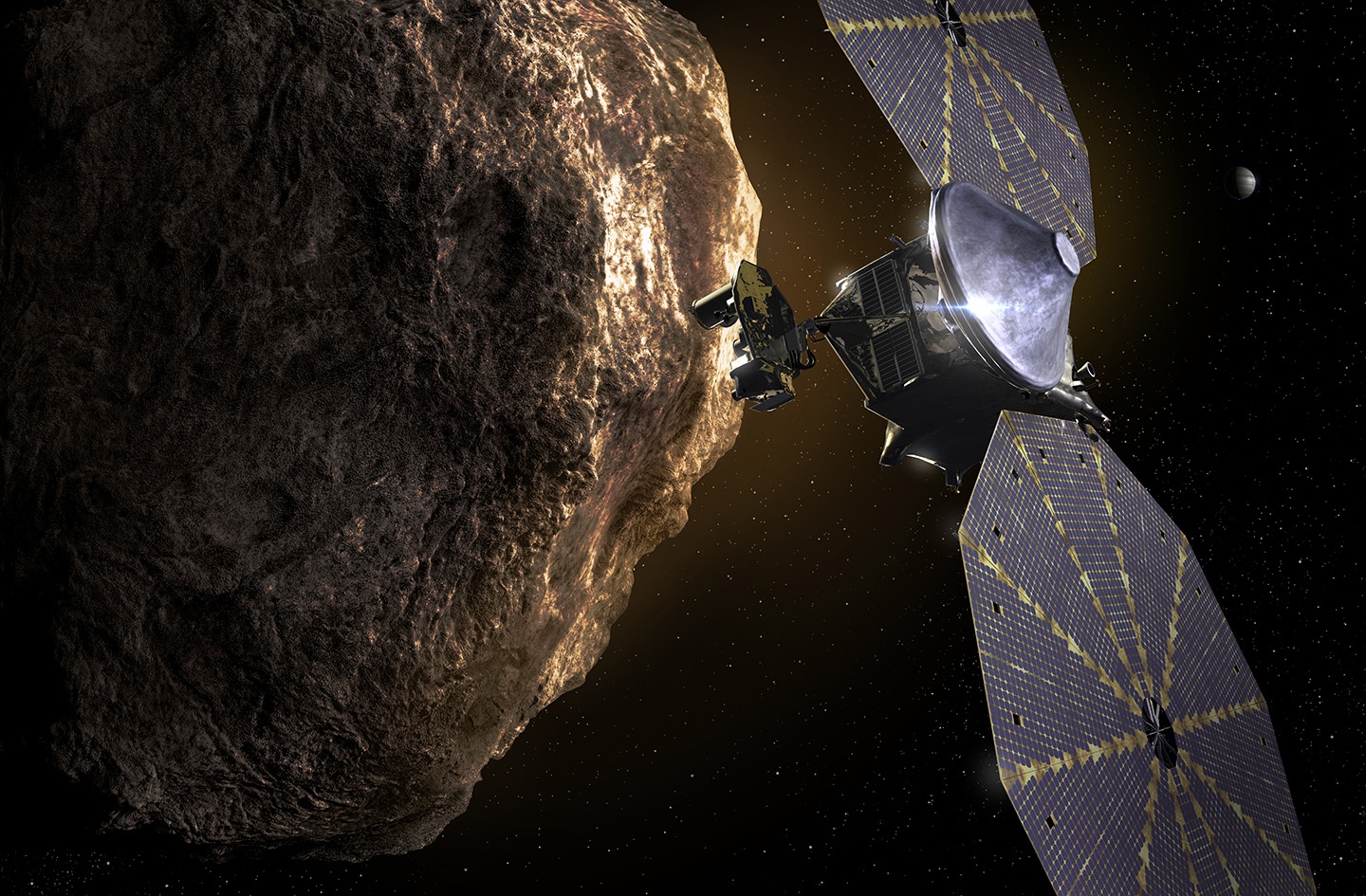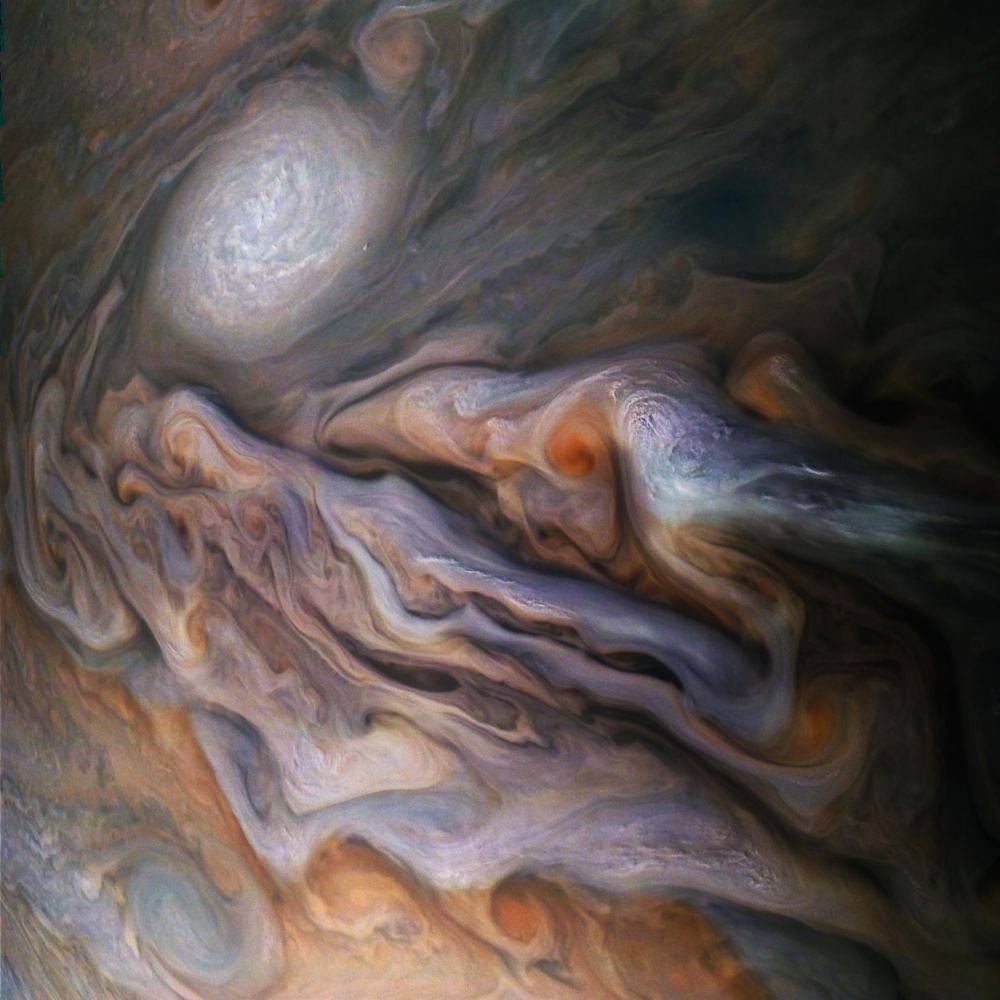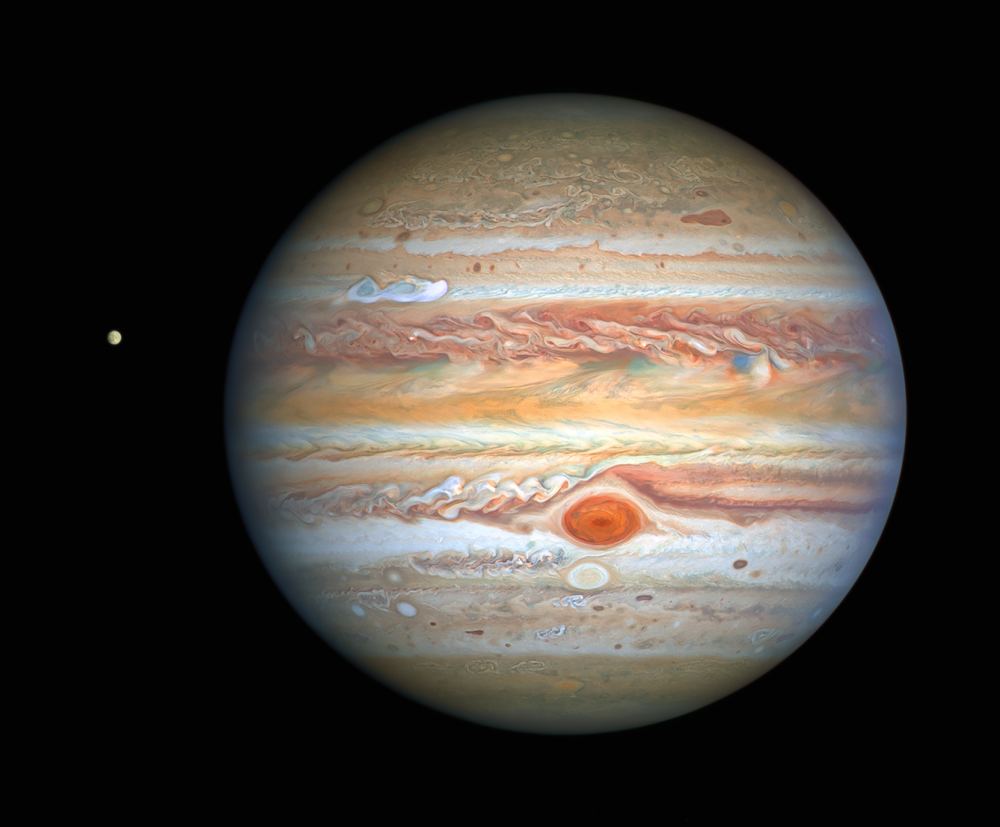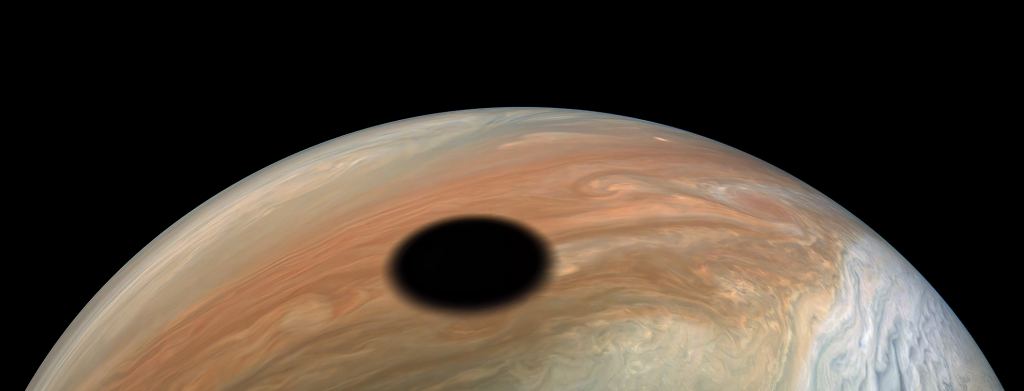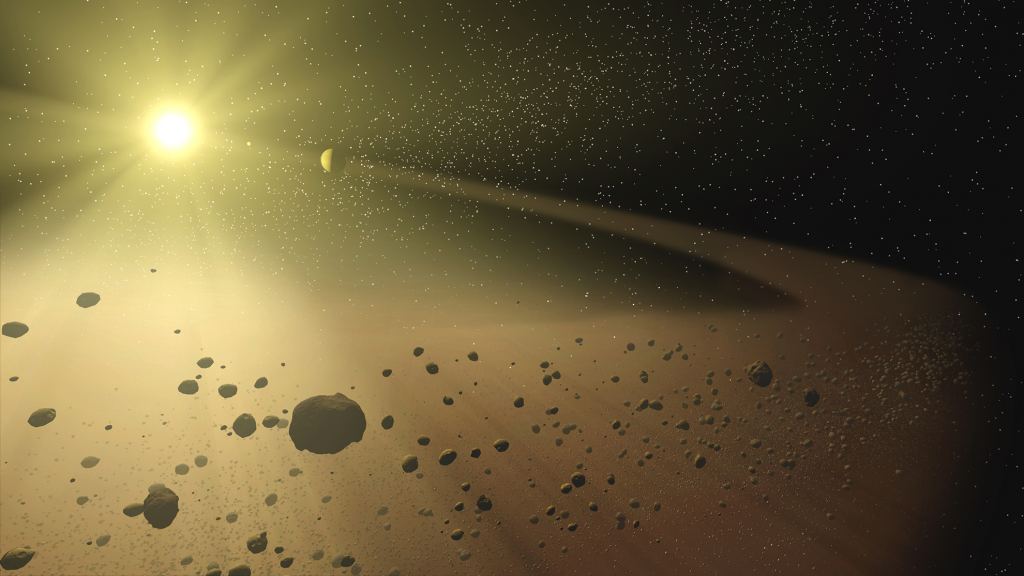A new batch of images recently arrived at Earth from JunoCam, the visible light camera on board the Juno spacecraft at Jupiter. The camera has provided stunning views of the gas giant world since the spacecraft’s arrival in 2016. Citizen scientists and imaging enthusiasts act as the camera’s virtual imaging team, participating in key steps of the process by making suggestions of areas on Jupiter to take pictures and doing the image editing work.
This lead image, edited by Kevin Gill, is another stunner: a look straight down into a giant storm.
And we like Kevin’s attitude about this whole process:
Continue reading “Stare Straight Down Into a Giant Storm on Jupiter”
